Given the long, cold winters in Utah, you might think there are no ticks in Utah. But, ticks let very little get in their way, cold winters included. In fact, ticks can survive up to two years or more without a blood meal. Most spend their winters in a state of hibernation, waiting for the spring. Global warming has led to an increase in tick numbers worldwide, which means more ticks and more tick-transmitted diseases in the Deseret state.
Here, we’ll take a look at the types of ticks in Utah. We’ll learn whether or not any of them carry Lyme disease and how to avoid their pathogen-laden bites. We’ll take a deep dive into each individual species to learn how to identify them, where they live, and what diseases they carry.
Keep reading to learn more about ticks in Utah!
Do Ticks in Utah have Lyme Disease?
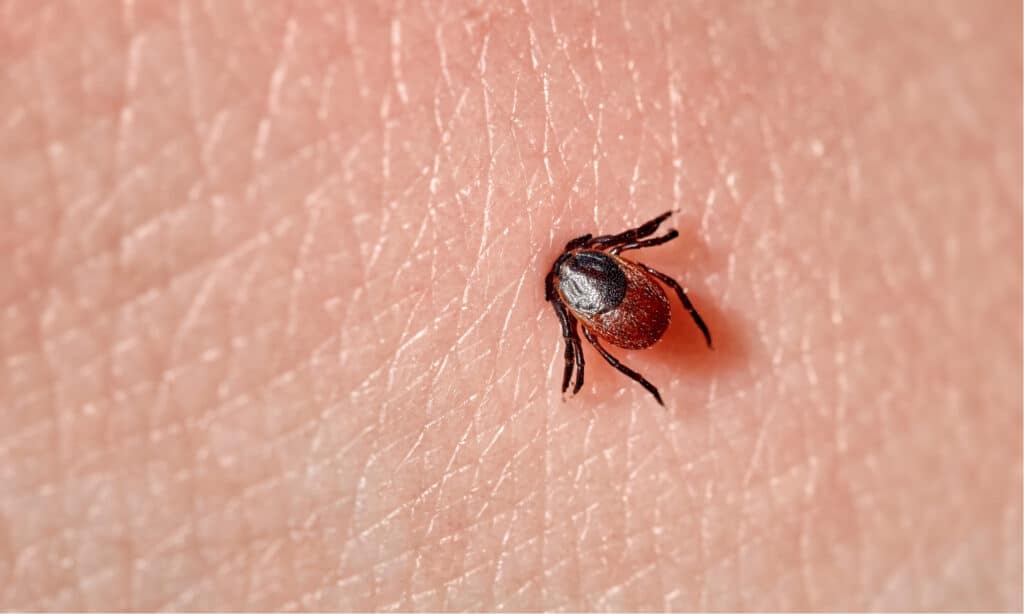
Western black-legged ticks in Utah are capable of transmitting Lyme disease.
©Evgeniyqw/Shutterstock.com
Unfortunately, ticks in Utah carry Lyme disease. Female western black-legged ticks are capable of transmitting Lyme disease, as well as Powassan virus, babesiosis, and more, to their human victims. If you’ve been bitten by a black-legged tick, try to save the tick once you’ve removed it. Then, mail the deceased tick to a tick testing facility, where it can be tested for Lyme disease. Also, contact your primary care physician and monitor yourself for any flu-like symptoms, or a bullseye-shaped rash around the bite.
Common Ticks in Utah
Rocky Mountain Wood Tick
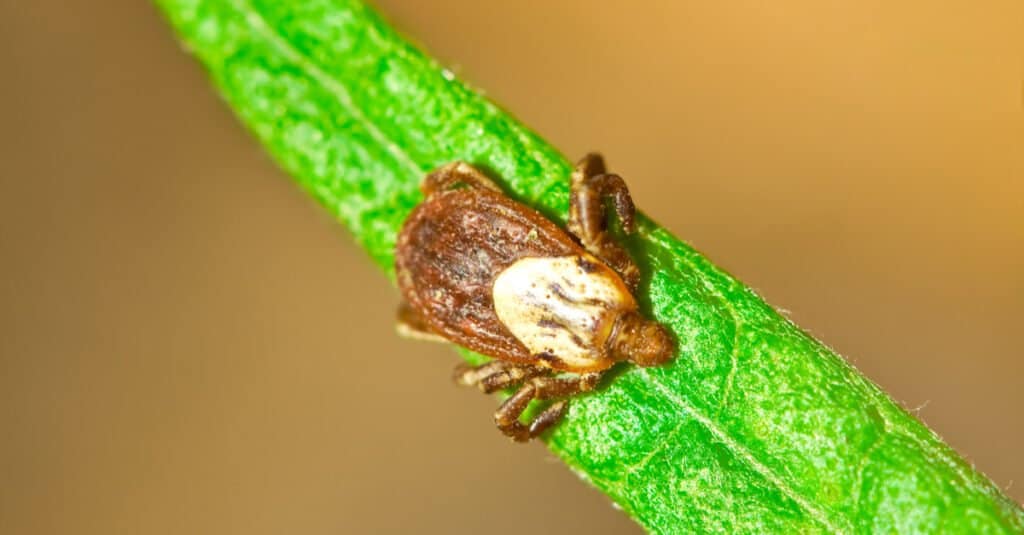
The Rocky Mountain wood tick is almost indistinguishable from the American dog tick.
©South12th Photography/Shutterstock.com
Rocky Mountain wood ticks in Utah are medium brown, with brown legs and small mouthparts. Females have tan scuta—the hard shields over their shoulders, while males have mottled tan bodies. These ticks do not carry Lyme disease, but they carry Colorado tick fever virus and Rocky Mountain spotted fever, among other illnesses. They’re most common in grasslands, shrublands, and along the edges of pathways.
Winter Tick
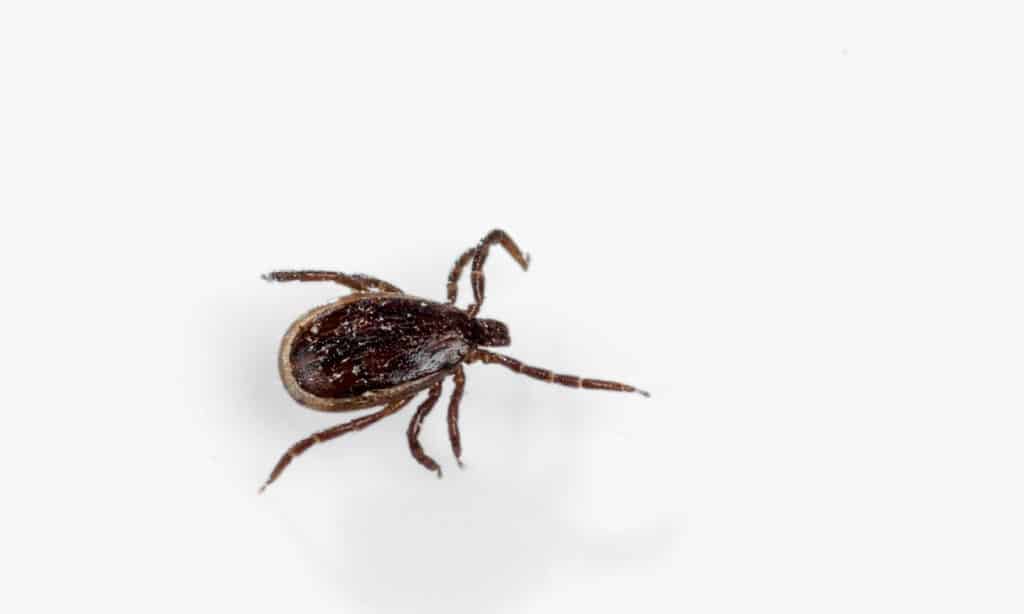
Few people will ever see a winter tick, but that doesn’t mean they’re not ubiquitous throughout the United States and Canada.
©iStock.com/VladK213
Winter ticks are among the smallest ticks in Utah. Both males and females have medium brown, oval bodies with small mouthparts and brown legs. These ticks feast mostly on deer, elk, and moose, and they are rarely seen by humans. They’re not known to transmit any diseases, though massive infestations on a single animal can lead to anemia and even death. Winter ticks live predominantly in forests and shrublands.
Western Black-legged Tick
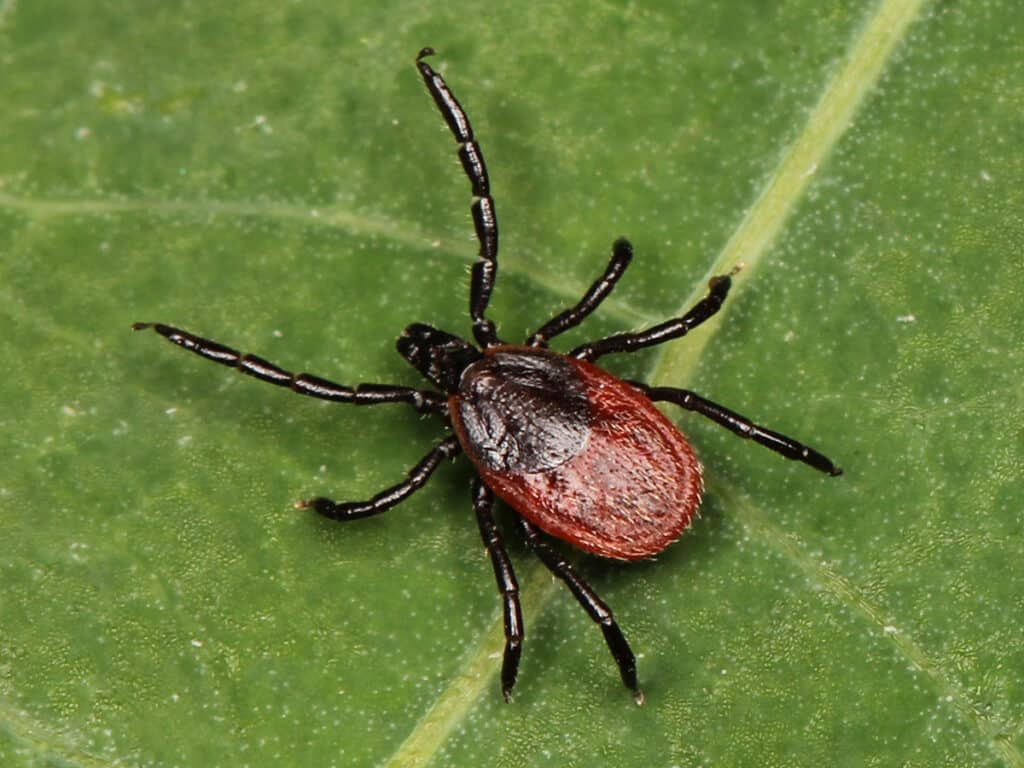
The western black-legged tick lives in Utah, as well as along the Pacific Coast.
©Kaldari / Creative Commons – License
Western black-legged ticks are very similar to eastern black-legged ticks, also known as deer ticks. Only female black-legged ticks bite humans; they are the only ticks in Utah that carry Lyme disease. Female black-legged ticks have black legs and black scuta. Their bodies are orange-brown, and their mouthparts are very large. These ticks live in both grasslands and forested areas. They’re most common in the spring and summer months.
Black-legged ticks feed on small mammals, like mice, rats, squirrels, and chipmunks, during their larval and nymph stages. Mice carry the bacteria responsible for Lyme disease, so, when a female black-legged tick feeds on mice, they pass the bacteria on to her. Then, when she bites a human, she transmits the infection, which results in Lyme disease.
American Dog Tick
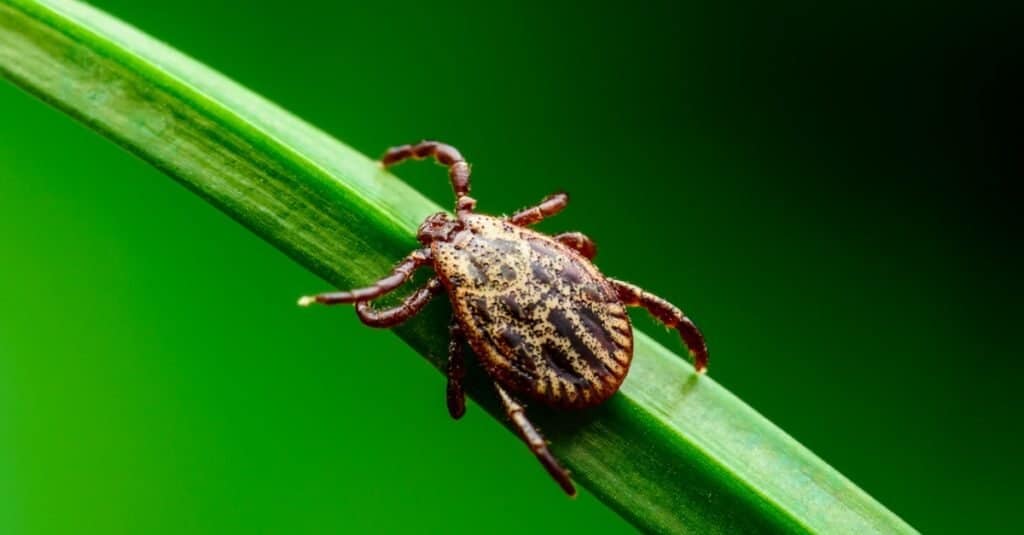
The American dog tick is the largest of all the ticks in Utah.
©iStock.com/nechaev-kon
American dog ticks in Utah frequently bite humans and dogs. They’re also known as wood ticks, though they prefer open grasslands or mixed shrublands. American dog ticks have brown legs and small mouthparts. Males have mottled tan and brown bodies, while females have tan scuta and brown bodies. These ticks don’t carry Lyme disease, but they can pass on Rocky Mountain spotted fever to both humans and dogs.
Rabbit Tick
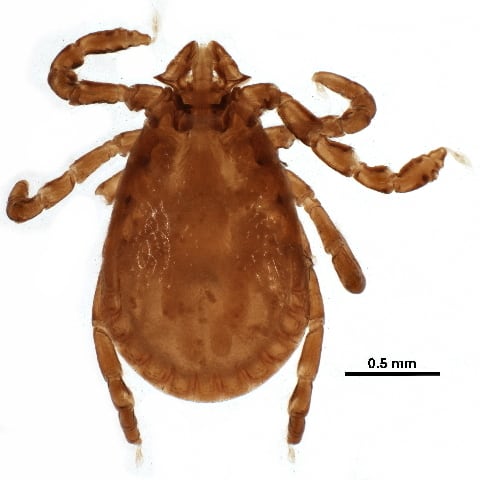
Rabbit ticks prefer the blood of rabbits.
©CBG Photography Group, Centre for Biodiversity Genomics / Creative Commons – License
Rabbit ticks are common ticks in Utah, but luckily, they don’t feed on humans. Instead, these ticks inhabit forested areas with plenty of small game. They prefer the blood of rabbits but will also feed on squirrels, foxes, skunks, raccoons, badgers, coyotes, birds, and other animals. Rabbit ticks do not carry Lyme disease, but they carry Rocky Mountain spotted fever and tularemia.
Brown Dog Tick
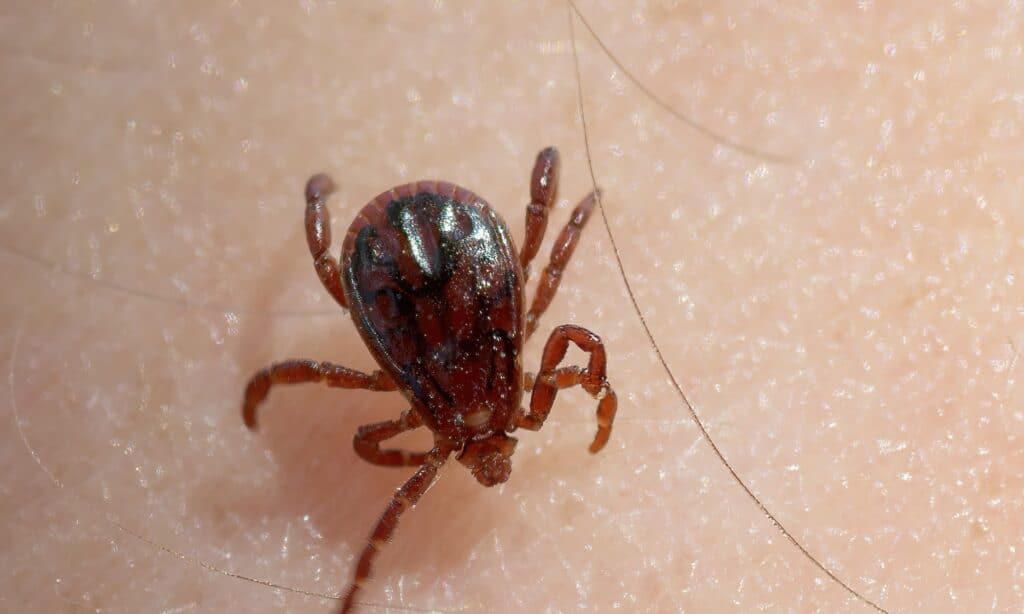
The brown dog tick is one of two varieties of dog tick in the world, the other being the American dog tick.
©iStock.com/RobertAx
Brown dog ticks are the only ticks in Utah that live indoors. They have narrow, brown bodies, with brown legs and small mouthparts. They almost always bite dogs, but occasionally bite humans or other domestic animals. Brown dog ticks don’t carry Lyme disease, but they can transmit canine-specific diseases to dogs. These ticks live wherever there are manmade structures and dogs to feed on.
How to Avoid Ticks in Utah
Ticks in Utah are best caught by wading through tall grass or dense underbrush with minimal clothing. Sound like a good time? Probably not. Ticks can’t jump, and they can’t bite you through your clothes. So, if you want to minimize your risk of getting bitten by a tick and contracting the sometimes serious illnesses they carry, cover up and stay out of the bushes.
This starts with light-colored, long-sleeved shirts and full-length pants. Once outdoors, stay away from any foliage that brushes against your clothes. And, once you’re done, be sure to check your entire body for embedded ticks. If you find one, remove it as soon as possible.
The photo featured at the top of this post is © iStock.com/nechaev-kon
Thank you for reading! Have some feedback for us? Contact the AZ Animals editorial team.






